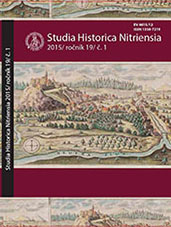Kulturní krajina na starých vyobrazeních
Cultural Landscape in Old Depictions
Author(s): Robert Šimůnek Subject(s): History
Published by: Univerzita Konštantína Filozofa v Nitre, Filozofická fakulta
Keywords: historical landscape; prospect of landscape; old maps; vedute; nobility
Summary/Abstract: Designed landscapes in all time periods were more or less a clear demonstration of status, power and entitlement: in their relationship to the audience as well as the landscape itself. In this elementary framework, a medieval castle is a good analogy, visually commanding a landscape and embodying the political and military potential, or a baroque castle complex with extensive gardens, expressing the social status of its owner and his place in the contemporary hierarchy. The design of the landscape – adaptation of natural elements and (primarily) its cultivation and combination with architecture – can be generally regarded as a status symbol. It is evident that the interplay of the ideal and reality affected also contemporary vedute (views / prospects) of towns, manor houses with designed micro-worlds of manorial gardens, as well as cultural landscapes. Depictions of individual types of environments, landscape frameworks and landscape compositions were based on general idealized models of environments, into which painters and engravers inserted real panoramata of towns and villages as well as other structures (such as castles and chateaux, manor houses and whatever else might interest the public), and did so with greater or lesser degree of adaptation or, if we prefer, invention. This study presents fundamental characteristics of the given genre on selected examples from Bohemia around the year 1700 (pictorial maps, manuscript and printed prospects of cultural landscape with architecure).
Journal: Studia Historica Nitriensia
- Issue Year: 19/2015
- Issue No: 1
- Page Range: 3-19
- Page Count: 17

